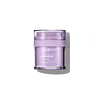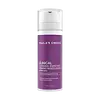What's inside
What's inside
 Key Ingredients
Key Ingredients

 Benefits
Benefits

 Concerns
Concerns

 Ingredients Side-by-side
Ingredients Side-by-side

Water
Skin ConditioningGlycerin
HumectantTetrahexyldecyl Ascorbate
AntioxidantDimethicone
EmollientPolyacrylamide
4-Butylresorcinol
AntioxidantHexapeptide-2
BleachingAllantoin
Skin ConditioningHydrolyzed Brassica Napus Seedcake Extract
Skin ConditioningTremella Fuciformis Sporocarp Extract
AntioxidantSqualane
EmollientDipotassium Glycyrrhizate
HumectantPentylene Glycol
Skin ConditioningButylene Glycol
HumectantDimethicone Crosspolymer
Emulsion StabilisingC13-14 Isoparaffin
EmollientCeramide NP
Skin ConditioningCeramide AP
Skin ConditioningCeramide EOP
Skin ConditioningLinoleic Acid
CleansingLinolenic Acid
CleansingPhytosphingosine
Skin ConditioningCholesterol
EmollientSodium Lauroyl Lactylate
EmulsifyingXanthan Gum
EmulsifyingCarbomer
Emulsion StabilisingCetearyl Olivate
Sorbitan Olivate
EmulsifyingLaureth-7
EmulsifyingCaprylyl Glycol
EmollientHexylene Glycol
EmulsifyingEthylhexylglycerin
Skin ConditioningPhenoxyethanol
PreservativeWater, Glycerin, Tetrahexyldecyl Ascorbate, Dimethicone, Polyacrylamide, 4-Butylresorcinol, Hexapeptide-2, Allantoin, Hydrolyzed Brassica Napus Seedcake Extract, Tremella Fuciformis Sporocarp Extract, Squalane, Dipotassium Glycyrrhizate, Pentylene Glycol, Butylene Glycol, Dimethicone Crosspolymer, C13-14 Isoparaffin, Ceramide NP, Ceramide AP, Ceramide EOP, Linoleic Acid, Linolenic Acid, Phytosphingosine, Cholesterol, Sodium Lauroyl Lactylate, Xanthan Gum, Carbomer, Cetearyl Olivate, Sorbitan Olivate, Laureth-7, Caprylyl Glycol, Hexylene Glycol, Ethylhexylglycerin, Phenoxyethanol
Water
Skin ConditioningSodium Ascorbyl Phosphate
AntioxidantCetyl Alcohol
EmollientNeopentyl Glycol Diheptanoate
EmollientPotassium Cetyl Phosphate
EmulsifyingGlyceryl Stearate
EmollientPEG-100 Stearate
Glycerin
HumectantPEG-12 Glyceryl Dimyristate
Skin ConditioningBis-Diglyceryl Polyacyladipate-2
EmollientDimethicone
EmollientGlyceryl Ascorbate
AntioxidantTetrahexyldecyl Ascorbate
AntioxidantRetinol
Skin ConditioningCeramide NP
Skin ConditioningCeramide Ns
Skin ConditioningCeramide AP
Skin ConditioningCeramide EOP
Skin ConditioningCeramide Eos
Skin ConditioningCholesterol
EmollientCaprooyl Phytosphingosine
Skin ConditioningCaprooyl Sphingosine
Skin ConditioningSqualane
EmollientPunica Granatum Extract
AstringentPongamia Glabra Seed Oil
Skin ConditioningGlycyrrhiza Glabra Root
Skin ConditioningVitis Vinifera
MaskingTocopheryl Acetate
AntioxidantCarnosine
Skin ConditioningPanthenol
Skin ConditioningSodium PCA
HumectantButylene Glycol
HumectantSodium Citrate
BufferingCeteareth-25
CleansingPolysorbate 20
EmulsifyingEthylhexyl Stearate
EmollientSodium Hydroxide
BufferingTrideceth-6
EmulsifyingPropyl Gallate
AntioxidantAmmonium Acryloyldimethyltaurate/Vp Copolymer
Sodium Polyacrylate
AbsorbentBehenic Acid
CleansingDisodium EDTA
Phenoxyethanol
PreservativeCaprylyl Glycol
EmollientChlorphenesin
AntimicrobialWater, Sodium Ascorbyl Phosphate, Cetyl Alcohol, Neopentyl Glycol Diheptanoate, Potassium Cetyl Phosphate, Glyceryl Stearate, PEG-100 Stearate, Glycerin, PEG-12 Glyceryl Dimyristate, Bis-Diglyceryl Polyacyladipate-2, Dimethicone, Glyceryl Ascorbate, Tetrahexyldecyl Ascorbate, Retinol, Ceramide NP, Ceramide Ns, Ceramide AP, Ceramide EOP, Ceramide Eos, Cholesterol, Caprooyl Phytosphingosine, Caprooyl Sphingosine, Squalane, Punica Granatum Extract, Pongamia Glabra Seed Oil, Glycyrrhiza Glabra Root, Vitis Vinifera, Tocopheryl Acetate, Carnosine, Panthenol, Sodium PCA, Butylene Glycol, Sodium Citrate, Ceteareth-25, Polysorbate 20, Ethylhexyl Stearate, Sodium Hydroxide, Trideceth-6, Propyl Gallate, Ammonium Acryloyldimethyltaurate/Vp Copolymer, Sodium Polyacrylate, Behenic Acid, Disodium EDTA, Phenoxyethanol, Caprylyl Glycol, Chlorphenesin
Ingredients Explained
These ingredients are found in both products.
Ingredients higher up in an ingredient list are typically present in a larger amount.
Butylene Glycol (or BG) is used within cosmetic products for a few different reasons:
Overall, Butylene Glycol is a safe and well-rounded ingredient that works well with other ingredients.
Though this ingredient works well with most skin types, some people with sensitive skin may experience a reaction such as allergic rashes, closed comedones, or itchiness.
Learn more about Butylene GlycolCaprylyl Glycol is a humectant and emollient, meaning it attracts and preserves moisture.
It is a common ingredient in many products, especially those designed to hydrate skin. The primary benefits are retaining moisture, skin softening, and promoting a healthy skin barrier.
Though Caprylyl Glycol is an alcohol derived from fatty acids, it is not the kind that can dry out skin.
This ingredient is also used as a preservative to extend the life of products. It has slight antimicrobial properties.
Learn more about Caprylyl GlycolCeramide AP is a type of Ceramide.
Ceramides are intercellular lipids naturally found in our skin that bonds dead skin cells together to create a barrier. Having a strong skin barrier leads to more firm and hydrated skin.
They are known for their ability to hold water and thus are a great ingredient for dry skin. By bolstering the skin ceramides act as a barrier against irritating ingredients. This can help with inflammation as well.
If you would like to eat ceramides, sweet potatoes contain a small amount.
Read more about other common types of ceramides here:
Ceramide NP
Ceramide EOP
Ceramide EOP is a type of Ceramide.
EOP stands for a linked Ester fatty acid, a linked Omega hydroxy fatty acid, and the Phytosphingosine base.
Ceramides are intercellular lipids naturally found in our skin. They bind dead skin cells together to create a barrier. The ceramides in our skin have the ability to hold water to keep our skin hydrated.
Ceramides are an important building block for our skin barrier. A strong skin barrier helps with:
If you would like to eat ceramides, sweet potatoes contain a small amount.
Read more about other common types of ceramides here:
Learn more about Ceramide EOPCeramide NP is a type of ceramide.
Ceramides are intercellular lipids naturally found in our skin that bonds dead skin cells together to create a barrier. They are known for their ability to hold water and thus are a great ingredient for dry skin.
Ceramides are an important building block for our skin barrier. A stronger barrier helps the skin look more firm and hydrated. By bolstering the skin ceramides act as a barrier against irritating ingredients. This can help with inflammation as well.
If you would like to eat ceramides, sweet potatoes contain a small amount.
Read more about other common types of ceramides here:
Ceramide AP
Ceramide EOP
Cholesterol is a class of organic molecules called lipids. It helps hydrate your skin and is essential to having a healthy skin barrier.
Our skin naturally contains cholesterol in the outermost layer. Besides cholesterol, it also contains ceramides and fatty acids. Cholesterol makes up about 1/4 of your skin's outer layer and barrier. Your skin barrier is responsible for keeping allergens and microbes out. Having a healthy skin barrier is also responsible for keeping your skin firm and plump.
Our bodies use cholestrol to create vitamin D, steroid hormones, and more.
Learn more about CholesterolDimethicone is a type of synthetic silicone created from natural materials such as quartz.
What it does:
Dimethicone comes in different viscosities:
Depending on the viscosity, dimethicone has different properties.
Ingredients lists don't always show which type is used, so we recommend reaching out to the brand if you have questions about the viscosity.
This ingredient is unlikely to cause irritation because it does not get absorbed into skin. However, people with silicone allergies should be careful about using this ingredient.
Note: Dimethicone may contribute to pilling. This is because it is not oil or water soluble, so pilling may occur when layered with products. When mixed with heavy oils in a formula, the outcome is also quite greasy.
Learn more about DimethiconeGlycerin is already naturally found in your skin. It helps moisturize and protect your skin.
A study from 2016 found glycerin to be more effective as a humectant than AHAs and hyaluronic acid.
As a humectant, it helps the skin stay hydrated by pulling moisture to your skin. The low molecular weight of glycerin allows it to pull moisture into the deeper layers of your skin.
Hydrated skin improves your skin barrier; Your skin barrier helps protect against irritants and bacteria.
Glycerin has also been found to have antimicrobial and antiviral properties. Due to these properties, glycerin is often used in wound and burn treatments.
In cosmetics, glycerin is usually derived from plants such as soybean or palm. However, it can also be sourced from animals, such as tallow or animal fat.
This ingredient is organic, colorless, odorless, and non-toxic.
Glycerin is the name for this ingredient in American English. British English uses Glycerol/Glycerine.
Learn more about GlycerinPhenoxyethanol is a preservative that has germicide, antimicrobial, and aromatic properties. Studies show that phenoxyethanol can prevent microbial growth. By itself, it has a scent that is similar to that of a rose.
It's often used in formulations along with Caprylyl Glycol to preserve the shelf life of products.
Squalane is an emollient that helps the skin hold onto moisture. It's an oily liquid that occurs naturally in certain types of fish and plant oils.
Because squalane boosts hydration in the skin, it also comes with plenty of benefits: it is an antioxidant and can help fight free radicals and skin damage. Squalane is also found to have a detoxifying effect when applied.
Squalane comes from squalene, which occurs naturally within the sebum of our skin. It is one of the oils our skin produces to keep itself hydrated. Squalane is the hydrogenated version of squalene and has a longer shelf life.
Research shows that squalane is non-irritating (even at 100% concentration).
In general, it's a fantastic ingredient. It does a great job at hydrating the skin, and it's suitable for those with sensitive skin.
The source of squalane may impact malassezia / fungal acne. This is because olive oil derived squalane can contain impurities such as fatty acids and plant waxes. Sugarcane derived squalane is recommended for anyone with malassezia concerns.
Is squalane vegan?
This depends on the source. Squalane can be derived from both plants and animals. Most squalane used in skincare comes from plants.
Please note: the source of squalane is only known if disclosed by the brand. We recommend reaching out to the brand if you have any questions about their squalane.
Read more about squalene with an "e".
Is squalane an oil?
Squalane is often called an oil, but it’s technically not; it’s a hydrocarbon, meaning it’s only made of carbon and hydrogen, unlike true oils which are triglycerides made of fatty acids and glycerol.
The term “oil-free” isn’t regulated, so companies can define it however they want. Some exclude all oils, while others just avoid mineral oil or comedogenic oils.
While some people avoid oils thinking they cause breakouts, the right kind of oil (or oil-like ingredient like squalane) can actually help balance and hydrate your skin. It’s worth testing out simple oils or squalane to see what works best for your skin.
Learn more about SqualaneTetrahexyldecyl Ascorbate (THD) is a stable and oil-soluble form of Vitamin C.
THD is special in that it has the ability to travel deeper into skin than traditional ascorbic acid while maintaining the same skin benefits (double win!).
Because it’s oil-soluble, THD dives deep into your skin’s fatty layers (think ceramides and cholesterol) to fight off the kind of free radicals that mess with your skin barrier. This makes it a great pair with water-based vitamin C (ascorbic acid) that mainly works on the surface.
Even at just 0.1%, THD is already showing great antioxidant activity. When used up to 2%, it helps keep your skin happy and calm, especially when it’s stressed from pollution or sun.
Want to fade dark spots or tackle hyperpigmentation? You’ll want 5% or more. Pairing it with brightening buddies like niacinamide or licorice root gives even better results. One study even used 30% THD with other brighteners and saw real results on stubborn discoloration, even in melasma-prone skin.
A note on THD: It’s has a slightly silky, oily texture and usually shows up colorless or pale yellow (though the exact shade can vary by supplier).
While you can sneak it into water-based formulas, it really shines when paired with silicones or oils, which help your skin soak it up better.
THD is pretty stable, but it’s still vulnerable to degradation like ascorbic acid. Too much light or heat (above 113°F / 45°C) can break it down over time. Go for dark and opaque packaging that keeps it safe and shady!
Read more about other types of Vitamin C:
Learn more about Tetrahexyldecyl AscorbateWater. It's the most common cosmetic ingredient of all. You'll usually see it at the top of ingredient lists, meaning that it makes up the largest part of the product.
So why is it so popular? Water most often acts as a solvent - this means that it helps dissolve other ingredients into the formulation.
You'll also recognize water as that liquid we all need to stay alive. If you see this, drink a glass of water. Stay hydrated!
Learn more about Water